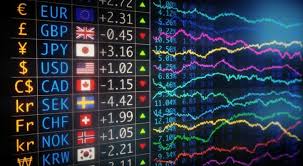
Top 10 Best Indicators for Forex Trading Success
In the fast-paced world of forex trading, having the right set of indicators can make a significant difference between success and failure. Traders often rely on various tools to analyze market trends, identify entry and exit points, and make informed decisions. In this article, we will explore some of the best indicators for forex trading that can enhance your trading strategy and boost your profitability.
Additionally, for traders looking for reliable platforms to execute their trades, best indicators for forex trading Trading Platform VN offers robust features and tools that can further aid in your trading endeavors.
1. Moving Averages
Moving averages are one of the most commonly used indicators in forex trading. They smooth out price data to create a trend following indicator that shows the direction of the market. There are two main types: the Simple Moving Average (SMA) and the Exponential Moving Average (EMA). The SMA gives equal weight to all prices in the period, while the EMA gives more weight to recent prices, making it more responsive to new information. Traders often use the crossover of moving averages as a buy or sell signal.
2. Relative Strength Index (RSI)
The RSI is a momentum oscillator that measures the speed and change of price movements. It ranges from 0 to 100 and is typically used to identify overbought or oversold conditions in a market. An RSI value above 70 indicates overbought conditions, while a value below 30 suggests oversold conditions. Traders use RSI to spot potential reversals and trends, making it a valuable tool in their trading arsenal.
3. Moving Average Convergence Divergence (MACD)
The MACD is a trend-following momentum indicator that shows the relationship between two moving averages of a security’s price. It consists of the MACD line, the signal line, and the histogram. Traders look for crossovers between the MACD line and the signal line to identify potential buy and sell signals. Additionally, the histogram indicates the strength of the momentum, helping traders gauge the sustainability of a trend.
4. Bollinger Bands
Bollinger Bands consist of a middle band (SMA), an upper band, and a lower band. The bands expand and contract based on market volatility. When the price reaches the upper band, it may indicate that the market is overbought, while the lower band suggests oversold conditions. Traders often use price movements near the bands as signals to enter or exit trades, making Bollinger Bands an excellent tool for identifying potential reversals or continuation patterns.
5. Stochastic Oscillator

The Stochastic Oscillator is another momentum indicator that compares a particular closing price to a range of prices over a specific period. It generates two lines: the %K line and the %D line. When the %K line crosses above the %D line, it can signal a bullish trend, while a crossover below may indicate a bearish trend. This indicator helps traders determine potential trend reversals and identify entry points.
6. Fibonacci Retracement Levels
Fibonacci retracement levels are based on the Fibonacci sequence and are used to identify potential support and resistance levels in the market. Traders use these levels to determine potential reversal points after a price retracement. The key Fibonacci levels, such as 23.6%, 38.2%, 50%, 61.8%, and 100%, help traders set target prices and stop-loss orders, enhancing their risk management strategies.
7. Average True Range (ATR)
The Average True Range (ATR) is a volatility indicator that measures the market’s volatility by calculating the average range between the high and low prices over a set period. Traders use ATR to adjust their position sizes based on market conditions, set stop-loss orders, and identify potential breakout opportunities. A rising ATR indicates increasing volatility, while a declining ATR suggests decreasing volatility.
8. Ichimoku Cloud
The Ichimoku Cloud is a comprehensive trading system that provides detailed insight into support and resistance levels, trend direction, and momentum. It consists of five lines, including the Tenkan-sen, Kijun-sen, Senkou Span A, Senkou Span B, and Chikou Span. Traders analyze the relationships between these lines to identify potential buy and sell signals, allowing them to make more informed trading decisions.
9. Parabolic SAR
The Parabolic SAR (Stop and Reverse) is a trend-following indicator that shows potential reversal points in the market. It appears as dots above or below the price candles, indicating whether the market is in an uptrend or downtrend. When the dots switch from above to below the price, it signals a potential buy opportunity, while a switch from below to above indicates a potential sell signal. This indicator is particularly useful in trending markets.
10. Price Action
While not a traditional indicator, price action trading relies on the analysis of historical price movements to make trading decisions. Traders observe patterns and candlestick formations to identify potential reversals, trends, and market sentiments. Using price action allows traders to develop their unique strategies without relying solely on technical indicators, leading to a more intuitive understanding of market behavior.
Conclusion
In conclusion, choosing the right indicators for forex trading can greatly enhance your trading strategy and improve your chances of success. Each indicator has its strengths and weaknesses, and traders often find the best results by combining multiple indicators to create a well-rounded trading approach. Remember that no indicator is foolproof, and it’s essential to practice sound risk management and continuously educate yourself on market trends. By integrating these indicators into your trading routine, you can develop a more precise and strategic approach to forex trading.





